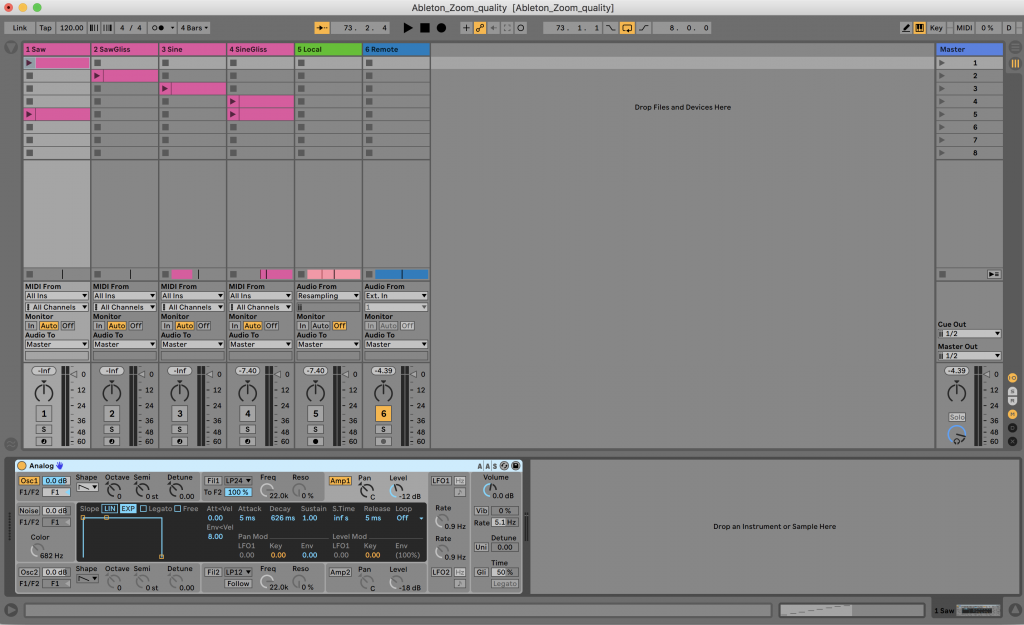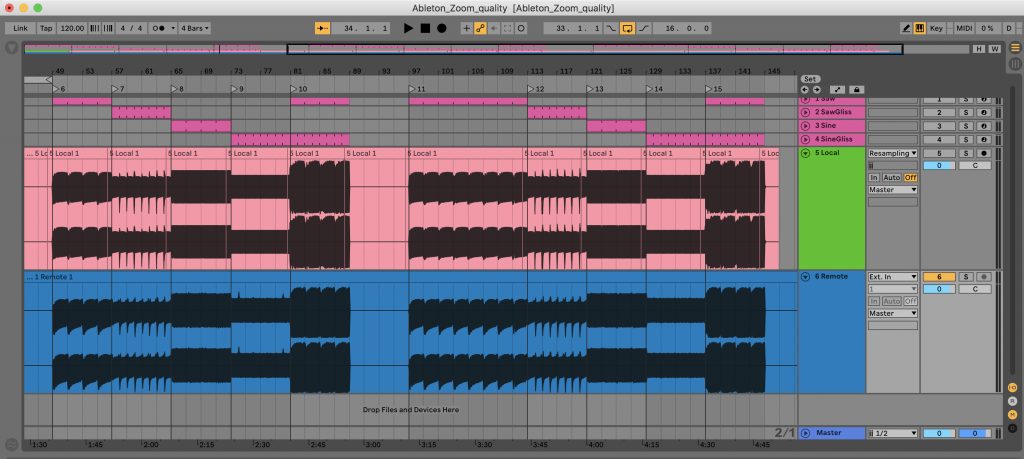TrevoX-Zoom_Quality
Overview
Part of the TrevoX series – Example (disambiguation)
TrevoX-Zoom_Quality project attempts to unravel some of the ambiguities with audio within the Zoom teleconferencing app.
To summarize the results, the standard audio feed has significant high-pass filtering, high-frequency distortion, occasional onset distortion and latency of about 164ms. With “Original Sound” turned on, there is no such filtering, virtually no high-frequency distortion, some but very little onset distortion, and the latency is about 156ms. When Desktop sharing is used (with the ZoomAudioDevice), regardless of whether Original Sound is turned on, the quality is about the same as when using the “mic” input with “Original Sound”, but the latency is much higher, about 250ms.
Questions
- What is the audio quality and latency when sent through the standard audio feed?
- What is the audio quality and latency with “Original Sound” turned on?
- What is the audio quality and latency when using desktop sharing?
- Does “Original Sound” make a difference with Desktop Sharing?
Technical Setup
I created an Ableton Set to generate 5 different sound sources using the “Analog” instrument: (1) Sawtooth notes over an 8-octave range, (2) a Sawtooth gliss, (3) Sinewave notes over an 8-octave range, (4) a Sinewave gliss and (5) a mix of the Sinewave gliss with 8-octaves of Sawtooth notes.
These 5 different sound sources were sent via Zoom using 3 different conditions: (A) Ableton to the “mic” input using Sounflower, (B) Ableton to the “mic” input using Soundflower with Zoom’s “Original Sound” turned on, and (C) Ableton to the ZoomAudioDevice with Zoom’s Desktop Sharing enabled.
The audio was recorded on the local (“host”) Ableton set and on the remote Ableton set. The two sets were synchronized using Link. The recordings from the remote set were then loaded into the local set for comparison.
Fig 1. Technical setup
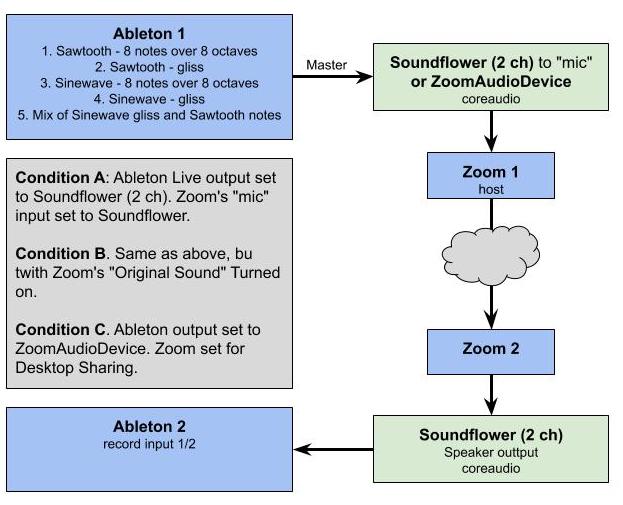
Fig 2. Host Ableton Live clip-view with Sawtooth instrument
Fig 3. Sawtooth gliss (uses LFO)

Fig 4. Sinewave instrument

Fig 5. Sinewave gliss instrument

Fig 6. Host Ableton Live arrangement-view
Summary of Results
Fig 7. (A1) Low pitch Sawtooth notes via Soundflower. Approximately 164ms latency.
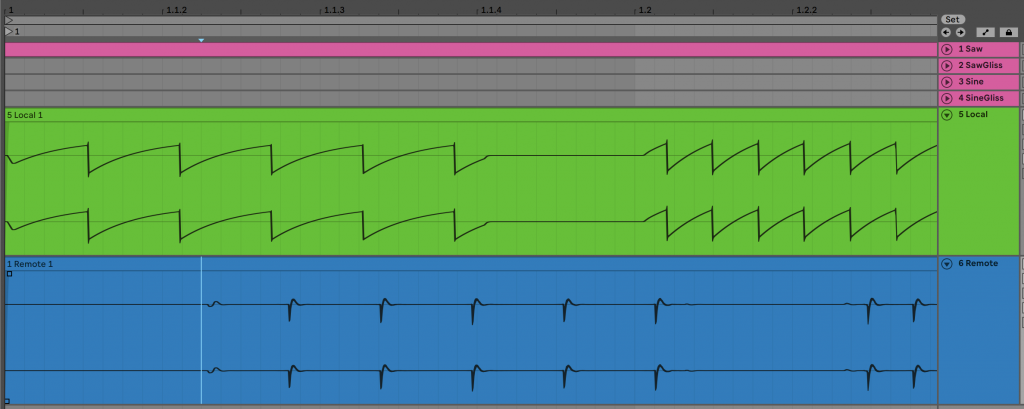
Fig 8. (condition A/1) High pitch Sawtooth notes via Soundflower. Approximately 164ms latency.
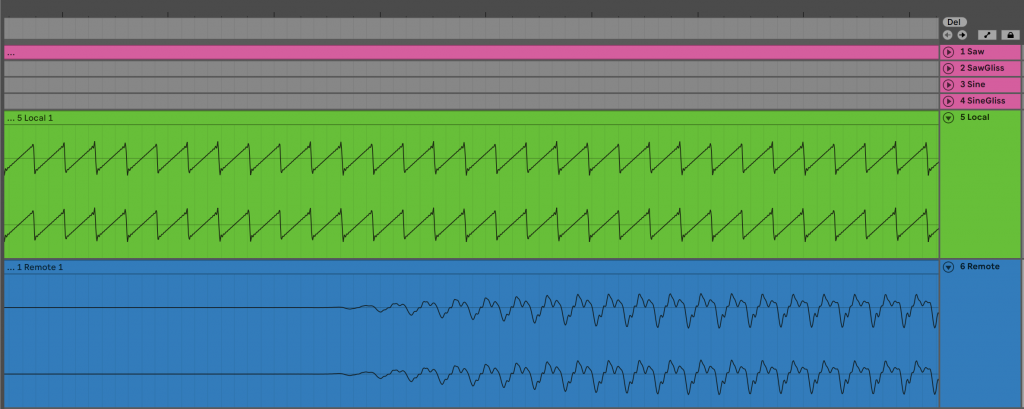
Fig. 9 (Condition A/3) Sinewave notes via Soundflower. Approximately 164ms latency.
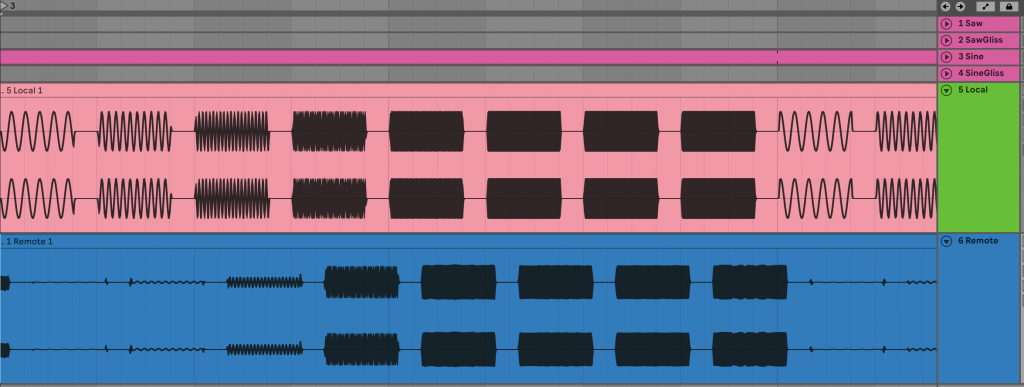
Fig. 10 (Condition A/4) Sinewave gliss via Soundflower. Approximately 164ms latency.
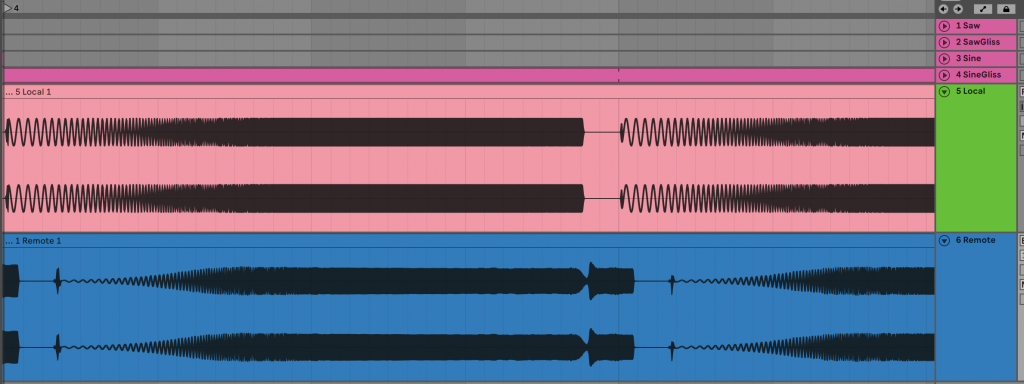
Fig. 11 (Condition B/1) low-pitch Sawtooth notes via Soundflower with “Original Sound” turned on. Approximately 156ms latency.
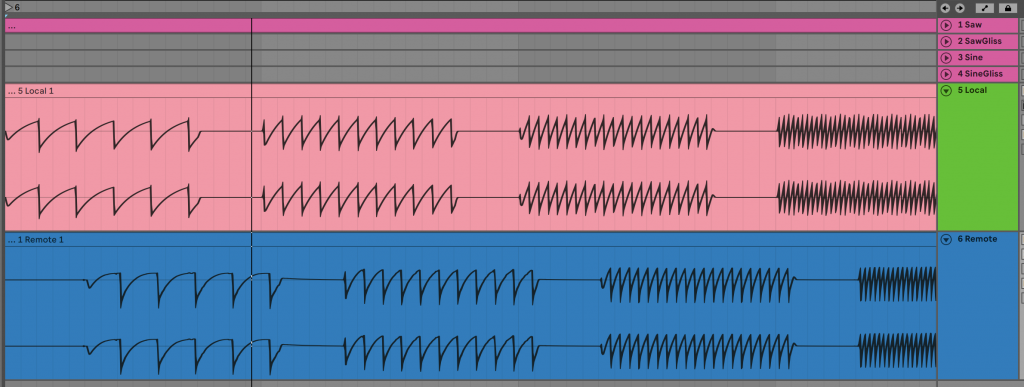
Fig. 12 (Condition B/4) Sinewave gliss via Soundflower with “Original Sound” turned on. Approximately 156ms latency.
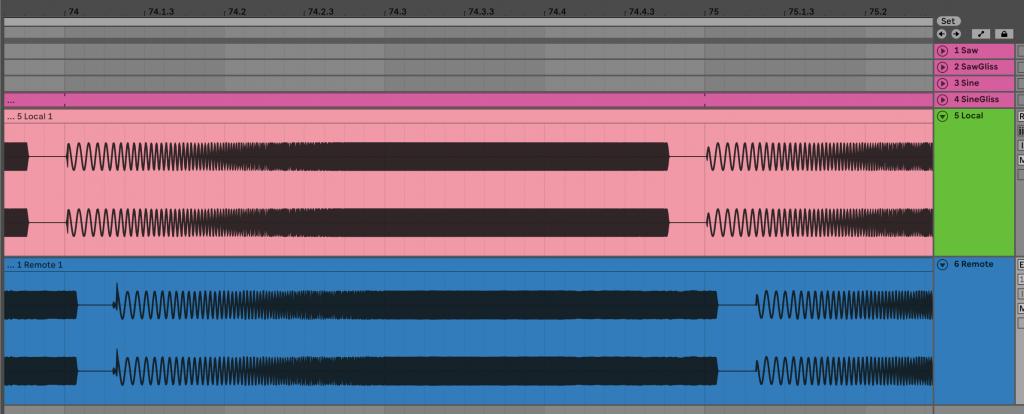
Fig. 13 (Condition C/1) Sawtooth notes via ZoomAudioDevice with Desktop Sharing. Approximately 250ms latency.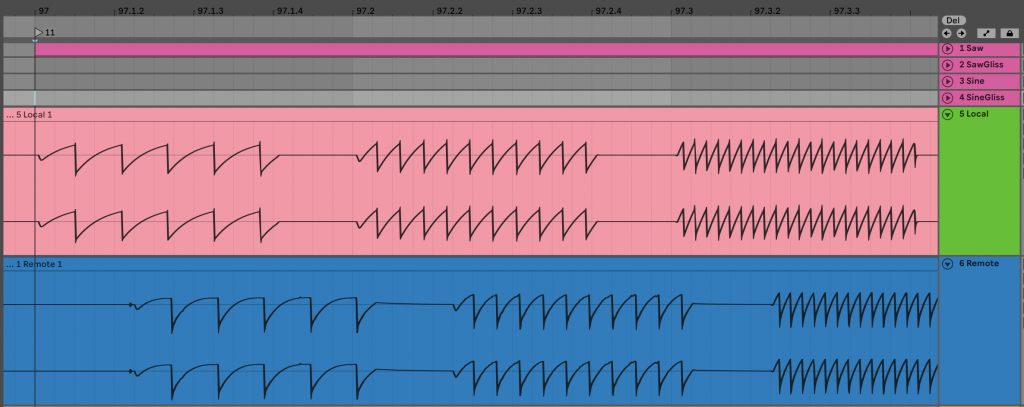
Fig. 14 (Condition C/4) Sinewave gliss via ZoomAudioDevice with Desktop Sharing. Approximately 250ms latency.
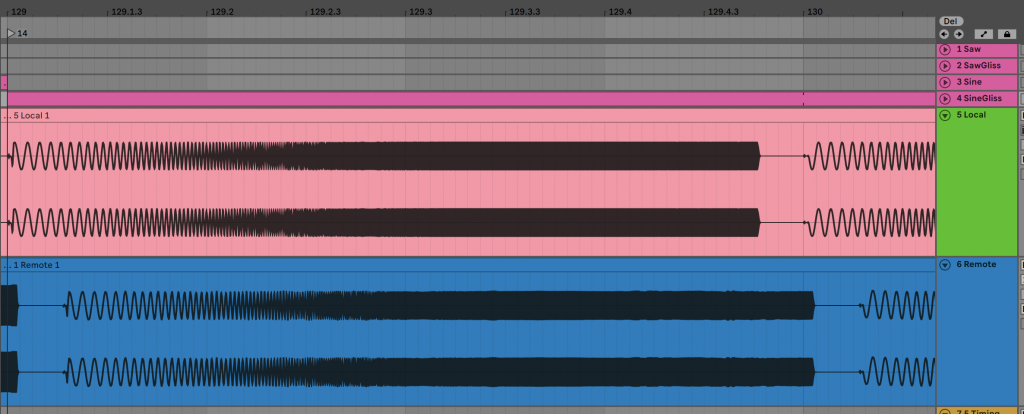
Settings Approximations
It should be noted that both laptops used Ableton preferences with a buffer of 512 samples (so, 10.7ms latency). The instruments used approximate Sawtooth waves. The gliss instrument uses an LFO to gliss. The two Ableton sets are synchronized via Link (whose latency should be negligible).
Fig. 15 Ableton Live preferences
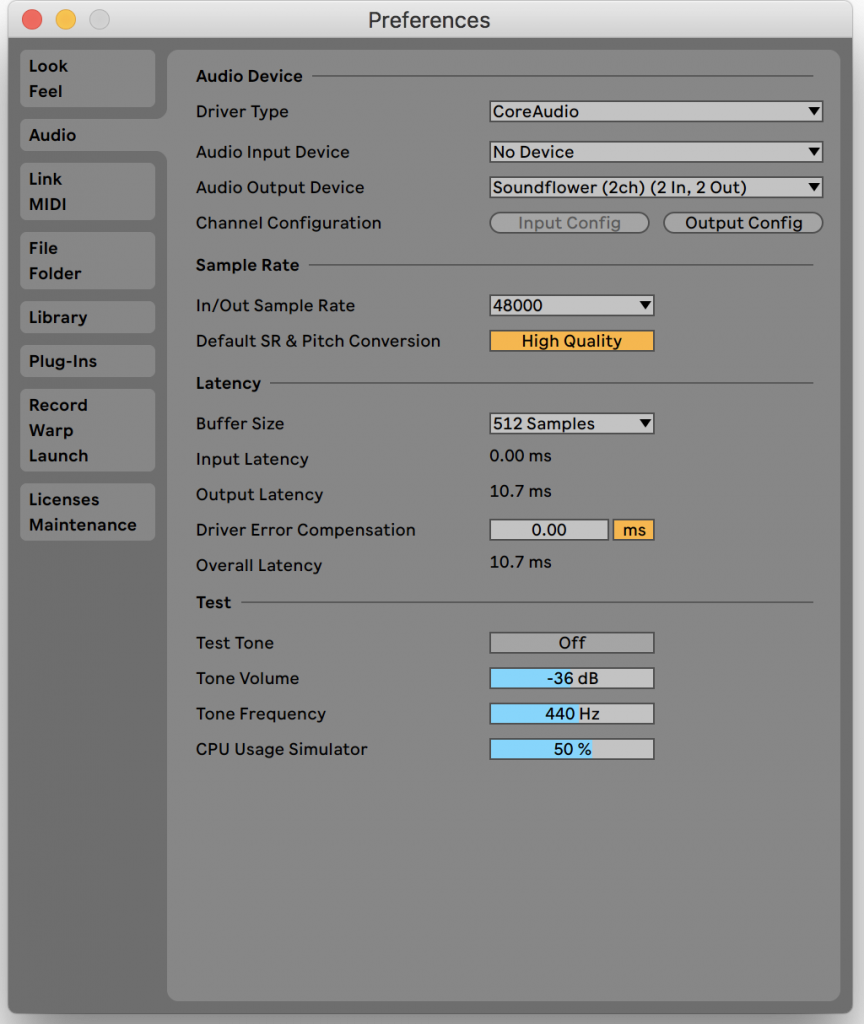
Fig. 15 Zoom Audio Settings (Host)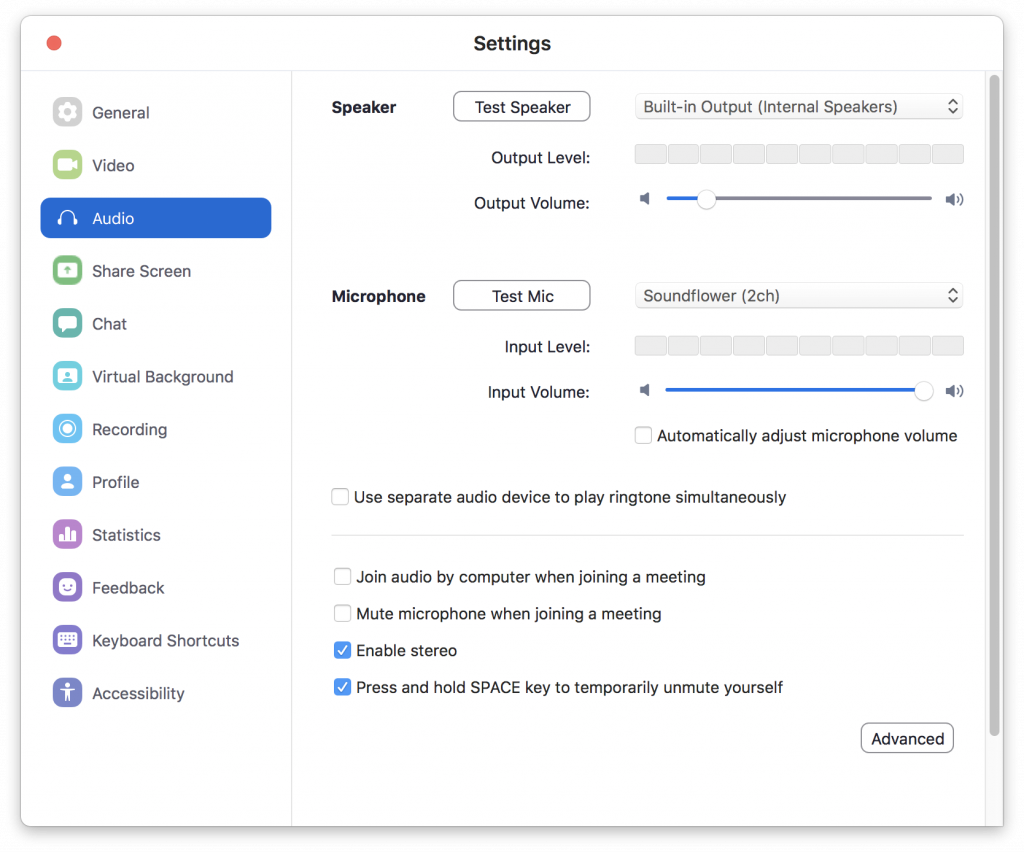
View more patches in the TrevoX series…


